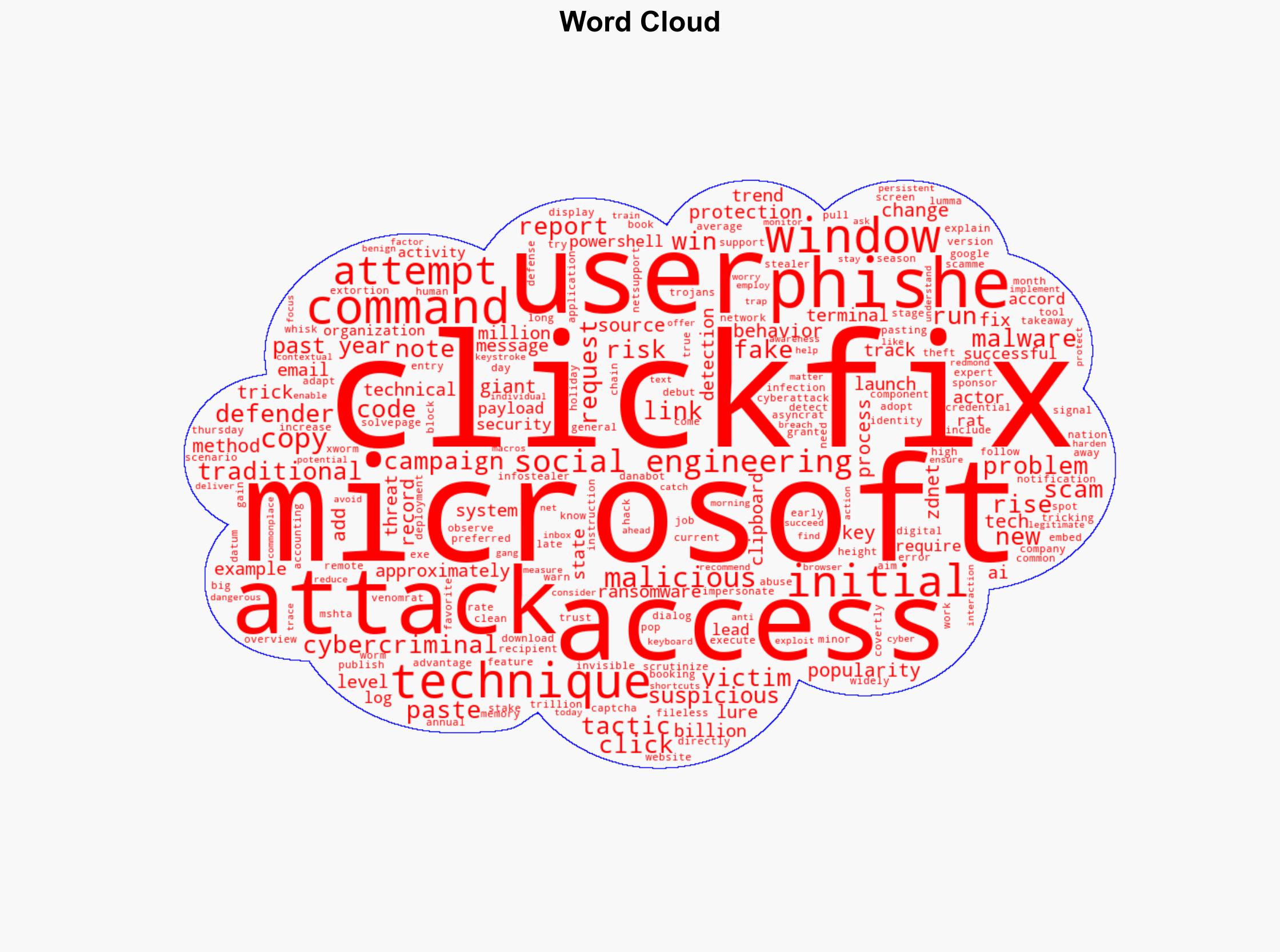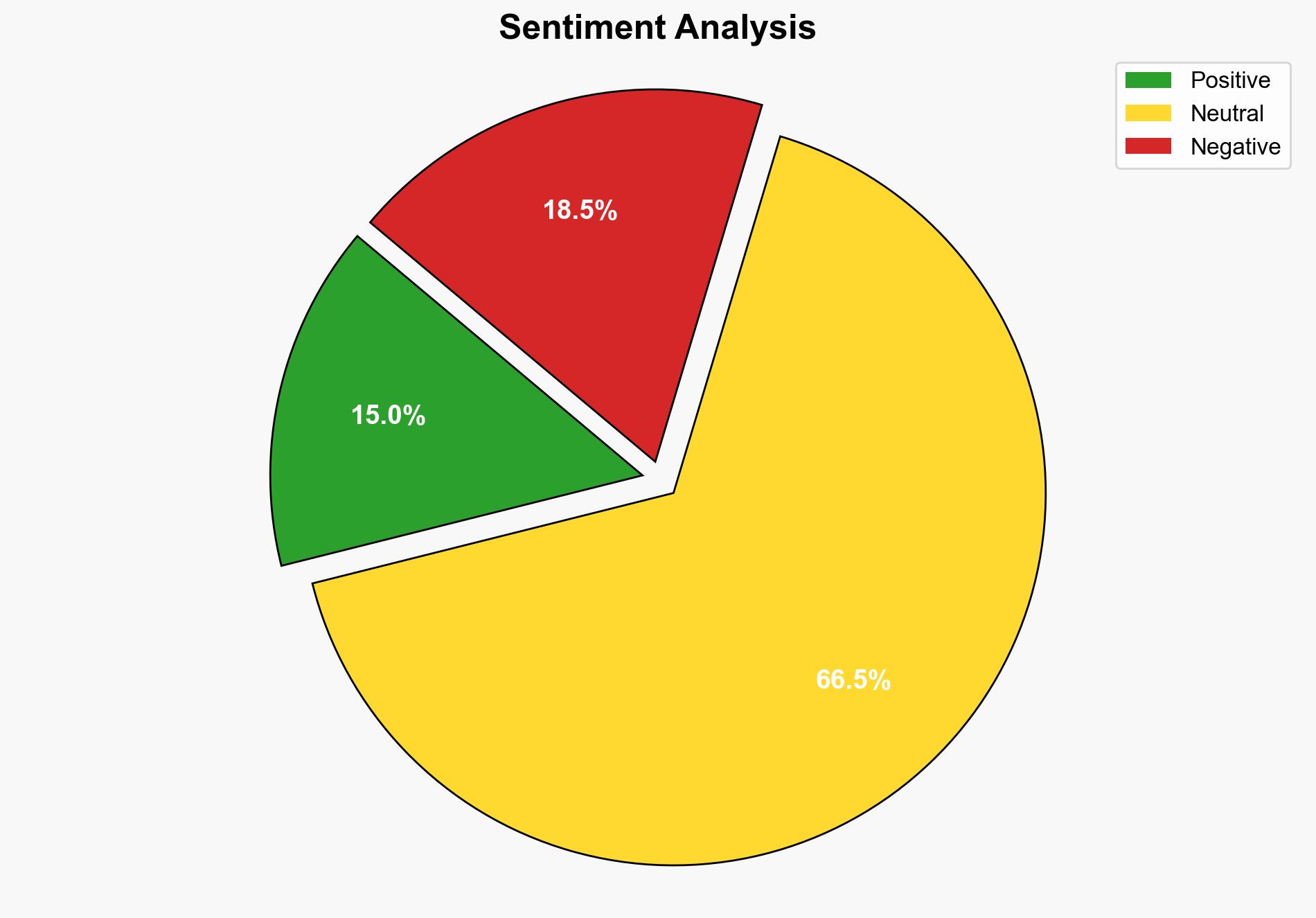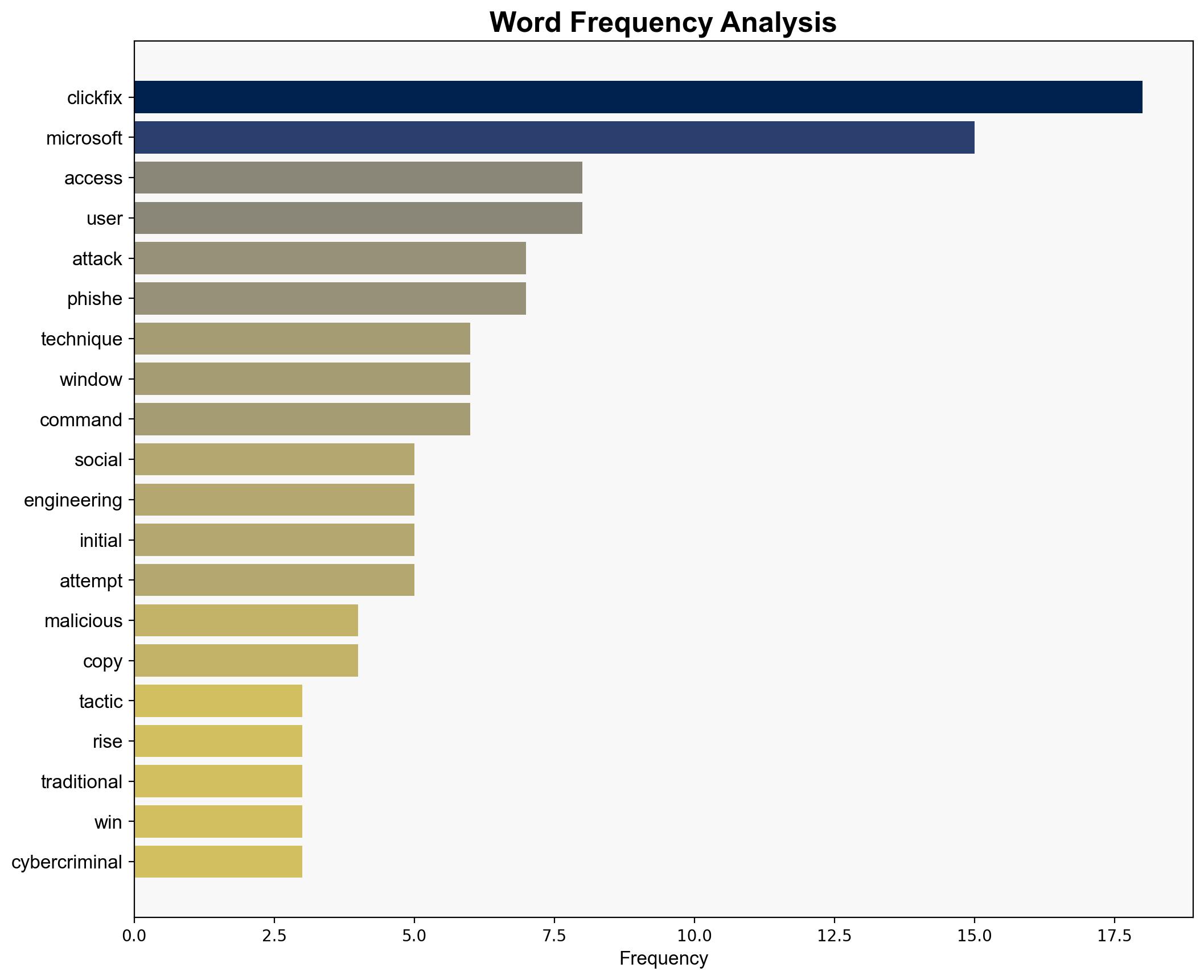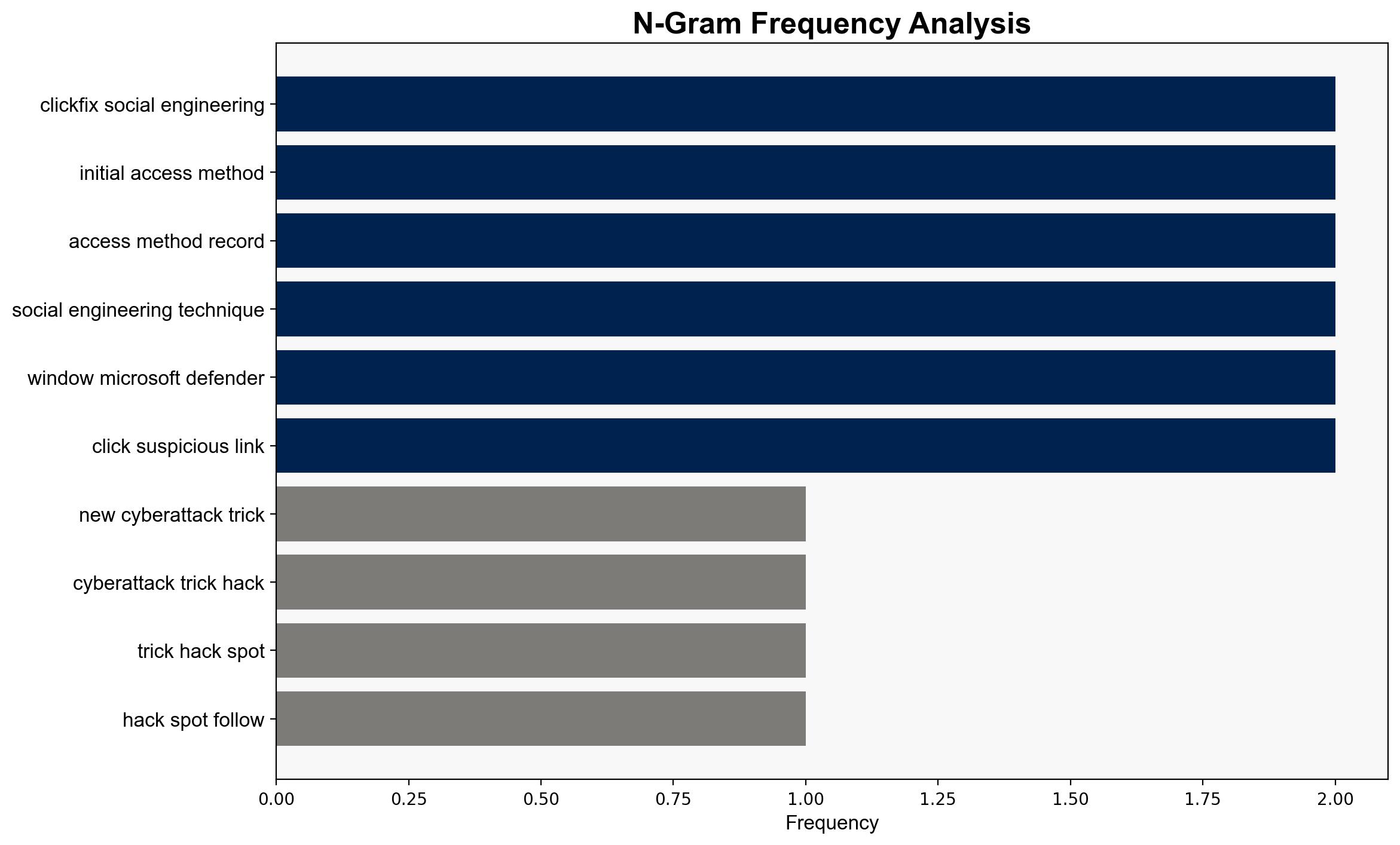This new cyberattack tricks you into hacking yourself Here’s how to spot it – ZDNet
Published on: 2025-10-17
Intelligence Report: This new cyberattack tricks you into hacking yourself Here’s how to spot it – ZDNet
1. BLUF (Bottom Line Up Front)
The most supported hypothesis is that the “ClickFix” social engineering tactic is becoming a prevalent method for initial access in cyberattacks, driven by its ability to bypass traditional security measures. Confidence in this assessment is moderate, given the reliance on Microsoft’s data and the potential for undisclosed biases. Recommended actions include enhancing user training on social engineering tactics and developing advanced detection systems for fileless attacks.
2. Competing Hypotheses
1. **Hypothesis A**: “ClickFix” is a rising social engineering tactic primarily due to its ability to exploit human error and bypass traditional security measures, making it a favored method for both cybercriminals and state-sponsored actors.
2. **Hypothesis B**: The observed increase in “ClickFix” attacks is overstated, potentially due to reporting biases or a temporary trend that will diminish as awareness and countermeasures improve.
Using ACH 2.0, Hypothesis A is better supported by the data, given the detailed examples of successful campaigns and the noted increase in popularity and effectiveness of the tactic. Hypothesis B lacks substantial evidence and relies on speculative assumptions about future trends.
3. Key Assumptions and Red Flags
– **Assumptions**: It is assumed that Microsoft’s data is comprehensive and unbiased, and that the tactics described are representative of broader trends.
– **Red Flags**: Potential bias in Microsoft’s reporting, as they have vested interests in promoting their security solutions. The lack of independent verification of the data is a concern.
– **Blind Spots**: The report does not address potential countermeasures that could already be in development or the role of other tech companies in mitigating these threats.
4. Implications and Strategic Risks
The rise of “ClickFix” tactics poses significant risks, including increased vulnerability of networks to ransomware and data theft. This could lead to economic losses and compromise sensitive information. The tactic’s reliance on human error suggests a need for improved user education and awareness. Geopolitically, state-sponsored actors utilizing these methods could escalate tensions and cyber warfare capabilities.
5. Recommendations and Outlook
- **Mitigation**: Implement comprehensive training programs focused on recognizing and responding to social engineering tactics.
- **Detection**: Develop and deploy advanced security solutions capable of identifying and neutralizing fileless attacks.
- **Scenario Projections**:
– **Best Case**: Rapid adaptation of security measures and user education reduces the effectiveness of “ClickFix” tactics.
– **Worst Case**: Widespread adoption of “ClickFix” leads to significant breaches and economic damage.
– **Most Likely**: Continued increase in “ClickFix” use, prompting gradual improvements in defensive measures.
6. Key Individuals and Entities
– Microsoft (as a primary source of data and analysis)
7. Thematic Tags
national security threats, cybersecurity, counter-terrorism, regional focus





